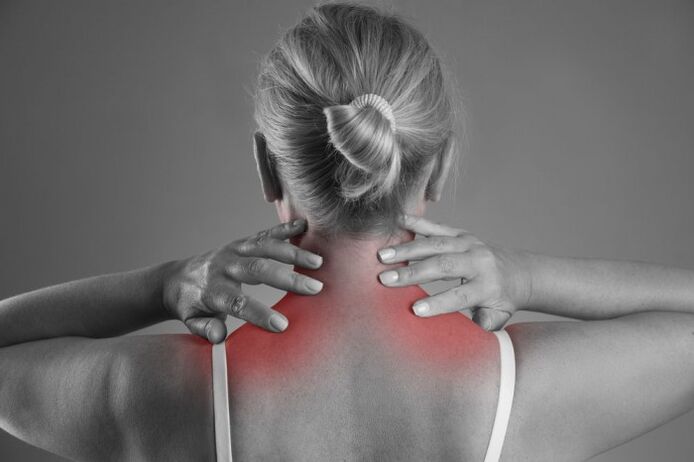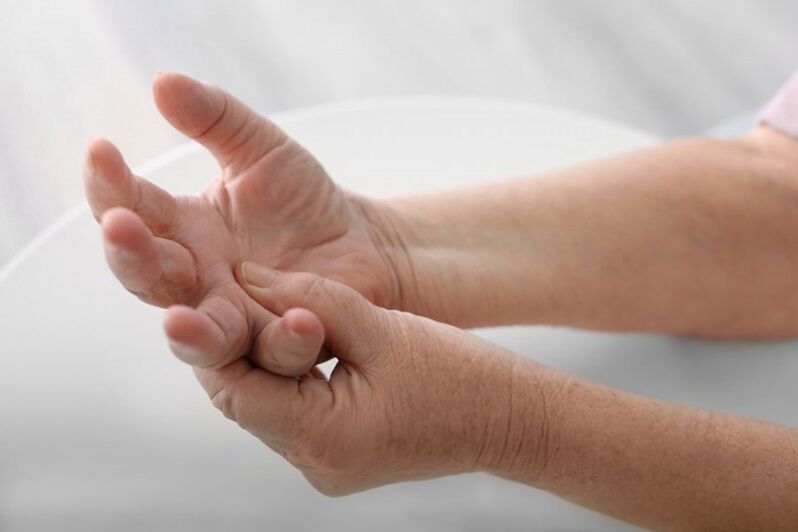
The lives of modern people are associated with a constant load to which the spine is exposed. If diseases of these vital organs are found mainly in adults and the elderly, today, according to medical statistics, representatives of the younger generation are increasingly experiencing such problems. The leader in this disease group iscervical osteochondrosis(SHOOH). This pathology gives difficulty to a person.
Therefore, it is necessary to learn about the causes of its appearance and methods of treatment.
What is cervical osteochondrosis
For a long time, most people tried not to notice the unpleasant discomfort in the neck area, referring to the usual tiredness and fatigue. But over time, the pain added to the discomfort when moving the head, and other unpleasant symptoms appeared. And only when the condition becomes critical, a person seeks medical help and finds out that he or she is suffering from cervical osteochondrosis.
The disease equally often strikes both sexes. As already mentioned, today it is often found in very young people under the age of 30 years. This phenomenon is largely due to the introduction of computer technology into all walks of life. People just stop moving and spend most of their time in a state of being chained to a monitor. As a result, pathological changes begin to occur in the cervical spine: the vertebrae are moved, and the cartilage tissue between them, which represents a kind of layer, becomes thinner. In other words, excessive growth of connective tissue occurs when formations in the form of growths appear on the vertebral body.
The consequence of such pathological changes is a decrease in the effect of shock absorption between the vertebrae, the bone surfaces, which are in contact with each other, causing friction, and squeezing the nearby nerves and blood vessels. All these pathological changes cause a deterioration of blood supply to the posterior parts of the brain, which leads to a deterioration of general well-being and pain. If the problem is not addressed in a timely manner, the disease will develop, and in severe cases can even lead to disability.
Causes of cervical osteochondrosis
Not long ago, the main cause of SHOC was always associated with age -related changes in the body. But in the realities of modern life, factors have emerged that increase the risk of developing pathology at a younger age.
Some of these reasons include:
- inactive lifestyle;
- forced to stay in one position (usually sitting);
- overweight;
- autoimmune diseases;
- draft;
- depressed state;
- injury to the cervical or occipital area;
- congenital anomalies of the spine;
- violation of metabolic processes.
In some cases, the disease develops as a result of hormonal disorders or poor heredity.
Symptoms of cervical osteochondrosis
In contrast to pathological processes in other parts of the spine, SHOX manifests itself more clearly. This feature is explained by the fact that in the cervical spine the vertebrae are very close to each other, so that the height of the intervertebral disc is small. This anatomical feature makes a greater contribution than other parts to the spinal space, compression of nerve tissue and blood vessels. Therefore, the main symptoms of the disease are localized in the upper back, in the cervical region and in the head.
In this case, the patient submitted the following complaint:
- limit neck movement, especially if you want to rotate the body;
- intense pain, which often does not allow a person to perform basic actions (bending, turning the head);
- special features while moving;
- decreased sensitivity in the hands;
- violation of movement coordination;
- dizziness;
- general weakness;
- decreased vision and hearing, tactile sensitivity or taste perception.
Since the cervical spine is composed of eight vertebrae, depending on the location of the dystrophic lesion, the disease has its own characteristic signs. Usually in this department there is a disturbance of sensitivity or restriction of mobility due to compression of the spinal roots. Thus, cervical osteochondrosis is distinguished by radicular symptoms, that is, taken into account which vertebrae are involved in the pathological process.

Symptoms of cervical osteochondrosis can be as follows:
- first vertebra - decreased sensitivity and numbness in the occipital area and neck are observed;
- the second - pain in the back of the head and parietal area;
- third - pain in the part of the neck where the roots are pinched, speech and perception of taste are also disturbed;
- fourth - pain radiating to the shoulder, under the scapula, respiratory disturbances can be observed;
- fifth - pain in the neck, radiating to the shoulders;
- sixth - pain in the neck extending to the forearms and thumbs on the hands;
- seventh - pain radiating to the scapular area, back shoulder, forearm and fingers;
- eighth - the pain spreads from the neck to the shoulders and further to the arms to the little fingers.
It should be noted here that the diagnosis pays special attention to the extent of the lesion. Because these criteria determine the degree of cervical osteochondrosis. There are only four of them and they determine the severity of the pathological process.
Diagnosis of the disease
It should be noted that an experienced physician can easily diagnose osteochondrosis of the cervical spine during the initial examination, by focusing only on specific symptomatic symptoms. But to determine the degree of damage and the prevalence of pathology, patients are advised to undergo several examinations.Basically, these are all hardware research methods. The diagnosis of cervical osteochondrosis includes:
- Radiographic examination of the cervical spine. In the diagnostic process, the degree of damage, localization, salt deposits, and location characteristics of the vertebrae are determined.
- Computed tomography - allows you to detect the possibility of rest, to determine the actual height of the intervertebral disc, the place of compression of nerve tissue and spinal cord, if any.
- MRI (magnetic resonance imaging) - provides an accurate display of pathological changes. Thanks to this type of examination, it is possible to determine the state of nerve fibers accurately, as well as the intensity of blood flow.
Often, when making a diagnosis, one of the types of examinations listed is sufficient. In most cases, doctors use a technique that has been proven for decades, namely X-rays.
Why is cervical osteochondrosis dangerous?
All spinal pathologies are fraught with serious problems. After all, the spinal space is a kind of foundation where the entire structure of the human body is located. Vital blood vessels pass through the cervical region, supplying oxygen and nutrients to the brain. There are many nerve endings here. Thus, a violation of the nerves or blood supply to vital organs threatens with serious consequences. And this is not an exaggeration of danger, because osteochondrosis of the cervical spine has serious consequences.

In addition to the perceived discomfort, the resulting vertebral deformity causes hearing loss, visual impairment. The brain with SCH suffers from a lack of oxygen. Therefore, osteochondrosis of the cervical spine is considered the most dangerous form of the disease.
To be sure of this, suffice it to list the most common SHOX complications:
- persistent hypertension;
- chronic migraine;
- vegetative-vascular dystonia (VVD);
- breathing problems;
- various perceptual disorders (taste, touch), which eventually take an irreversible form;
- cardiovascular pathology, of which stroke is the most dangerous.
In cases of further disease, the patient develops vertebral artery syndrome, and prolonged nerve root compression leads to radiculopathy. Subsequent changes in vertebral structure can result in complete loss of mobility in the neck. But the most serious complication of cervical osteochondrosis is death, which causes spinal cord compression.
Given the seriousness of the condition and the high possibility of complications, if alarming symptoms appear, you should immediately contact the hospital. Among the unpleasant symptoms are: systemic headache, dizziness, discomfort in the neck or back of the head. After the diagnostic steps, the doctor will select an adequate therapy.
Treatment of patients with SHS is usually complex. The therapy includes massage, rehabilitation gymnastics, physiotherapy procedures. Of course, without the use of medications, it is impossible to improve the patient's condition.Thus, the drug treatment complex for osteochondrosis includes:
- analgesic;
- nonsteroidal anti-inflammatory drugs;
- chondroprotectors;
- muscle relaxation is a way to reduce muscle tension;
- vitamin complexes must be prescribed.
All therapies are selected by specialists, taking into account the individual characteristics of the patient. Any type of self-treatment for cervical osteochondrosis is not acceptable. All of these drugs are intended to localize symptoms in the acute phase of the disease. During the remission period, other techniques are relevant. Usually, the treatment is carried out at home, i. e. on an outpatient basis. But in severe cases, the patient is hospitalized.
Traditional treatment methods
Doctors are always ready to supplement the complex of drug treatment with natural preparations prepared based on folk recipes. Various decoctions, infusions help stop inflammation and relieve pain.

Here are some recipes for alternative treatments of osteochondrosis:
- Dill seeds (200 g) should be poured with vodka (250 ml) or alcohol diluted in half with water. After two weeks of infusion, it is recommended to take on an empty stomach three times a day, one tablespoon of infusion.
- Ways for external use are easily prepared in the following order: purple (fresh) leaves must be crushed into a fine mass, add 300 ml of carrot juice (black) on them, then add 200 g of good honey to the mass. It is necessary to insist on the composition throughout the day in a dark place. Then it can be used to rub the problem areas. This product is recommended for use after consulting a doctor. This composition is contraindicated for those who are allergic to its components.
- From purple flowers, you can prepare infusions for internal use. To do this, take a tablespoon (tablespoon) of fragrant flowers, pour a glass of boiling water, strain in an hour and take 1 liter three times. Art.
Important! While taking all herbal preparations, the prescribed dosage should be strictly adhered to.
Gymnastics for cervical osteochondrosis at home
It makes sense to discuss the rehabilitation gymnastics complex with SHH only after stopping the acute period. With the increase of disease, such activities can only worsen the condition.
All physiotherapy training exercises aim to maintain normal movement in the cervical spine. Classes are held in a calm rhythm, there should be no sudden movements. If there are signs of fatigue or a painful sensation, the class stops immediately. The complex includes the following exercises that you can always do at home:
- While standing, you should tilt your head while inhaling until your chin touches your chest. As you exhale, the head is gently pulled back. The same exercises can be done independently while sitting in a chair.
- At any starting position, it is easier to perform head rotation movements. It is better to change the direction of movement periodically so that your head does not rotate. It is recommended to do the exercises in a slow rhythm.
- The performance of this exercise on a regular basis will help strengthen the cervical muscles perfectly: you need to put your hands in the "locks" and press the forehead towards them as much as possible. To achieve a lasting effect, repeat this exercise three times for 30 seconds. You can alternately press with the palm of your hand on your forehead, and then press with the forehead on the palm of your hand.

There are many other effective methods, but any option can be used only after obtaining a doctor’s consent.
To avoid a history of diagnosis "cervical osteochondrosis», You need to lead an active life, exercise regularly in the morning, pay attention to your neck, and equip your workplace properly.

















































